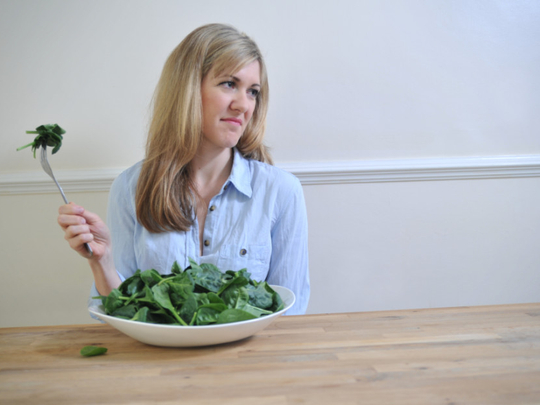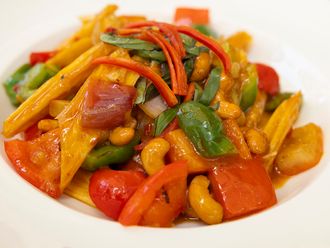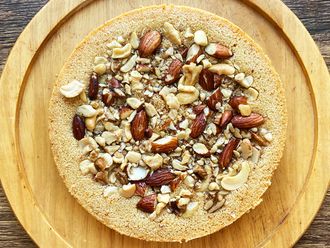
Vegetarians are now relatively well catered for, but if you want to avoid animal products such as eggs and dairy altogether, it’s tougher to find a restaurant to meet your needs. There are lots of great places if you’re open to those that are not exclusively vegan, but it pays to have some careful questions handy.
Go for a curry
India is the centre of the veggie universe. This is no surprise: 40 per cent of the population lives meat-free. No other cuisine matches the subcontinent’s scale and variety of vegetarian cookery, and while it’s not all suitable for vegans, a good deal of it is. The food of south India is lighter and fiercer than the north, with hot-sour sambar (lentil stew) and spicy coconut chutney served as addictive embellishments to many dishes. Dosa (rice and lentil crêpes) are hugely popular southern staples, and their close cousins, uttapham, are covered in myriad toppings like pizzas.
In the UK where many so-called Indian restaurants are run by Bangladeshis and Pakistanis, the cuisine can be more mixed, but look for southern and vegetarian Indian restaurants where you will be spoilt for choice. And just about every high-street curry house will have several vegetarian options. Often, the best are listed as sides rather than main courses. Mixing and matching a handful of these is a tasty and more authentic way to eat than a single plate of food. Hindus don’t consider eggs vegetarian, so they are rarely found on menus, but dairy is another story. Many dishes are enriched with curd (yoghurt) or ghee (clarified butter) — so ask. Check that your chapati hasn’t been brushed with butter, and skip the naan bread, which often has yoghurt or buttermilk in the dough.
Take a tour of south-east Asia
The super-spicy near-neighbours of India also boast some of the finest meat-free dishes around. Indonesian cuisine has tempeh, a nutritional powerhouse and close relative of tofu. It’s made with whole rather than ground soybeans, which are pressed and fermented. Look out for it deep-fried into crisp chips, which are traditionally dipped in chilli-spiked sauces.
Much south-east Asian food is knee-deep in greenery but vegans will need to keep a watchful eye out for shrimp paste and fish sauce, which give many dishes their umami hit. In Thai restaurants, you can ask for vegetable curries to be prepared with the fragrant massaman pastes of the far south, which omit shellfish — and you will find lots of tofu and vegetable curries, vegetarian versions of pad thai (stir-fried rice noodles with veg or meat) and tom yum soups — as well as the many excellent and delicious Thai salads (fish sauce, which is often used for salty flavour, can be replaced with soy sauce).
You do need to look out for unannounced eggs, which are often scrambled into dishes or used in the production of noodles. It’s fine to ask if you can have rice noodles which are vegan and commonplace in south-east Asian kitchens. In Chinese restaurants, they are known as ho fun and may be listed on the menu.
Ask them to hold the cheese in your nearest Italian
Did you know that Italy has the highest percentage of vegetarians in Europe? It certainly has a rich culinary tradition of cooking without meat. It’s not always easy to find a wide choice of strictly vegan dishes in an Italian restaurant, but it’s a myth that all pasta or risotto dishes are cheesy, buttery affairs. Now that the regional diversity of Italian food is celebrated in many of the UK’s restaurants, it’s getting easier. A restaurant carrying specialties from southern Italian regions will offer the most choice. Olive oil rather than cheese will season many pasta dishes. Rich, toothsome Puglian pasta shapes like orecchiette are usually made without eggs — and dried pasta, made from durum wheat, is always vegan.
Go cold turkey
With British restaurants falling over themselves to talk you into ordering several small sharing plates, you could do a lot worse than going to the spiritual home of this style of eating. A spread of Turkish mezze dishes can be as nourishing as it is delicious. Match a pulse dish like hummus with kısır (wheat, chopped herbs and walnuts) and you’re packing some serious protein. Delicious falafel has found its way into many southern European kitchens too. Smoky aubergine baba ganoush, stuffed vine leaves and many other dishes are vegan-friendly, with tahini paste used to give creamy nutty richness. Baklava, Turkey’s national dessert, is often made with syrup rather than honey, and traditional Turkish delight is also vegan (although it’s always worth checking).
Go for a really posh meal
Some of the country’s top-end restaurants, while not being nominally veggie, run tasting menus designed for a whole table of herbivores (contact the restaurants in advance for sample menus). Some of them also offer vegan tasting menus, while others will adapt with a little notice. London’s Pied a Terre, Gauthier Soho, Edinburgh’s The Kitchin have all achieved critical acclaim for their offerings. This is an exciting development in a sector of the restaurant world that has historically been suspicious of so-called dietary requirements.
— Guardian News & Media Ltd, 2016
















